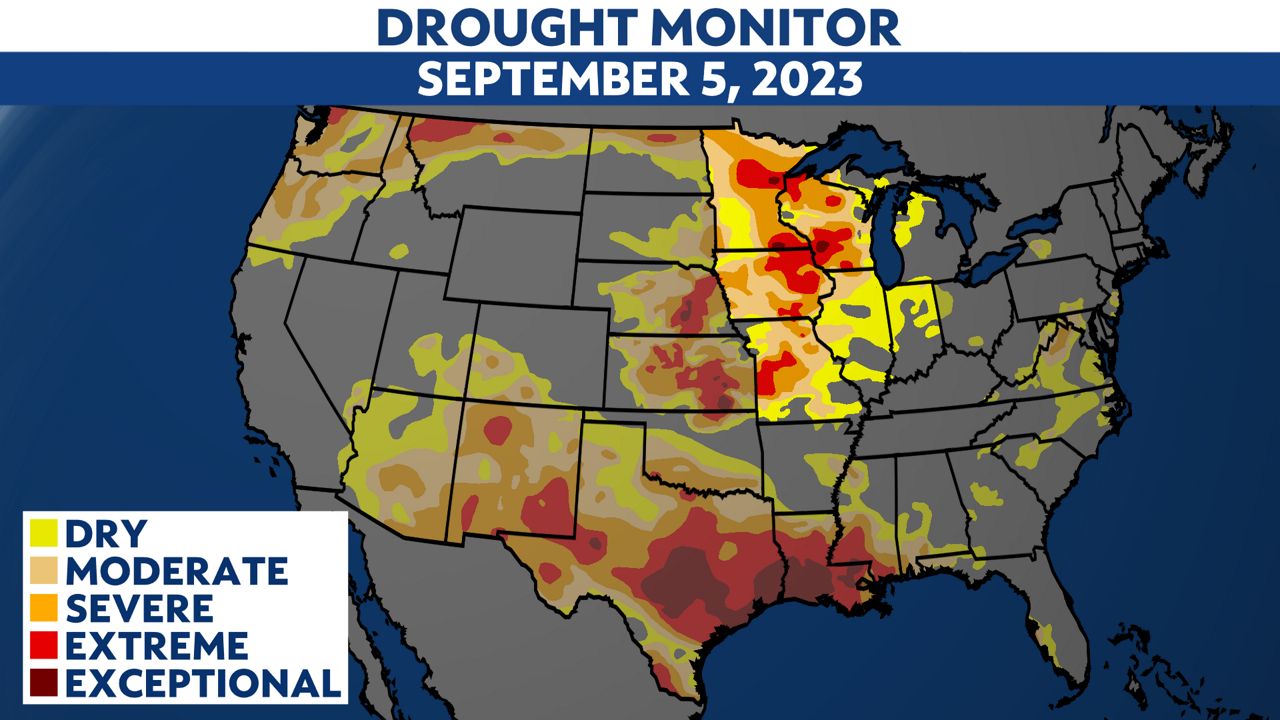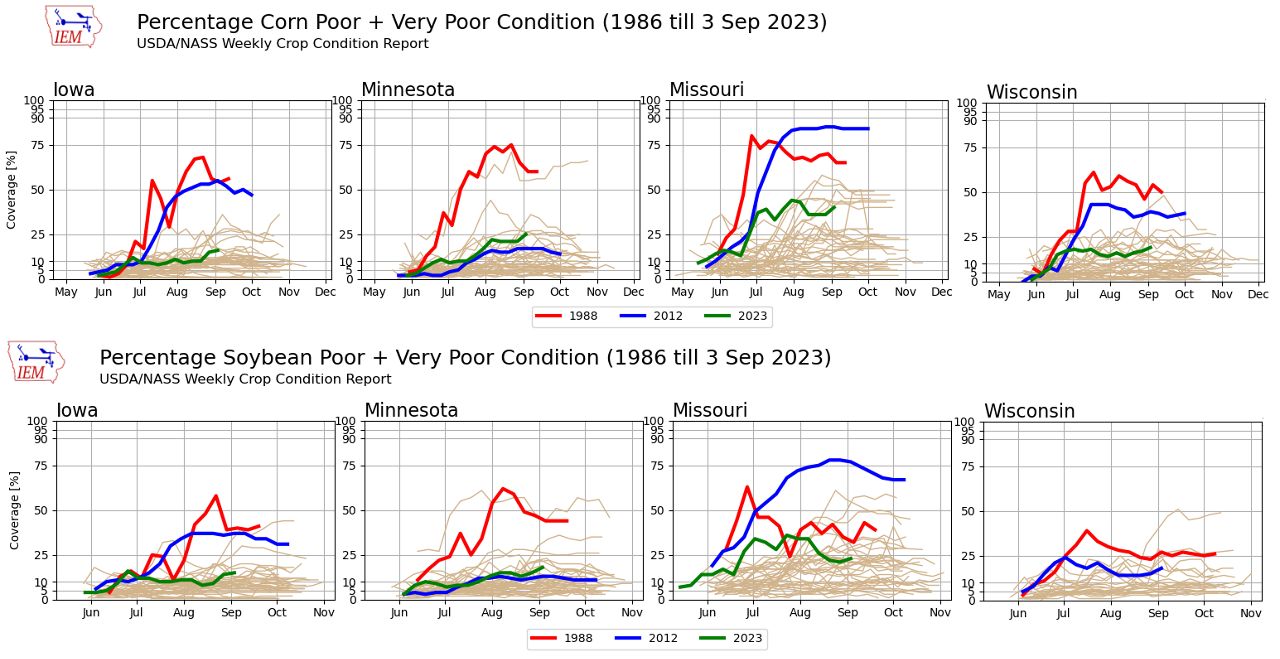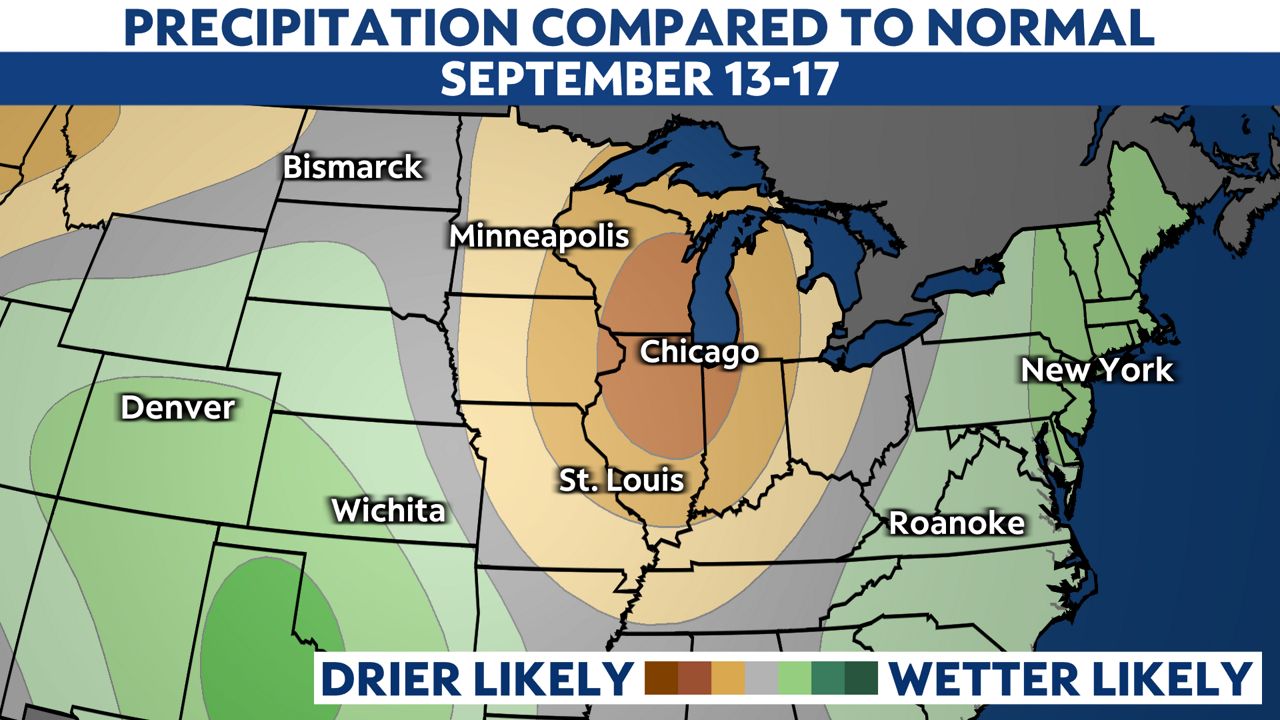Parts of the Upper Midwest are dealing with their driest summer in over a decade, leading to expansive drought. That’s led to worsening conditions for crops and pasture.
Drought Monitor
This week’s U.S. Drought Monitor summary points out that drought recently expanded “under conditions highly favorable for the rapid intensification of drought.” Unfortunately, the near-term outlook favors a continuation of below-average rainfall.
Even the seasonal outlook through the fall calls for drought to persist or worsen. The latest Drought Monitor has about 65% of the Midwest region in at least abnormally dry conditions, including more than 40% in moderate to exceptional drought.

Conditions are worst in Minnesota, Wisconsin, Iowa and Missouri. Wisconsin has the most area in extreme to exceptional-level drought it’s seen since the U.S. Drought Monitor began in 2000. Soil moisture in that region is far below average.
Effect on crops and pasture
This week’s crop report from the United States Department of Agriculture illustrates the stress that the drought is putting on crops. Fortunately, the percentage of the corn and soybean crops rated as poor to very poor is not as high as the drought years of 2012 and 1988.

(Iowa Environmental Mesonet)
Minnesota’s pasture and rangeland are faring worst, with 63% in poor to very poor condition. Iowa comes in at 46%, followed by Missouri at 43%.
Will this affect food prices?
Lower yields can mean feed prices go up, and those increases are passed along to consumers buying meat at the grocery store.
While drought covers a large area of the Central U.S., some other high-producing agriculture states are doing better. Illinois, Indiana, Ohio and South Dakota, for example, have limited to no drought conditions.
Our team of meteorologists dives deep into the science of weather and breaks down timely weather data and information. To view more weather and climate stories, check out our weather blogs section.

